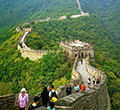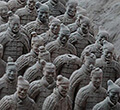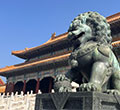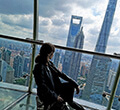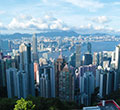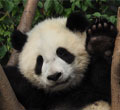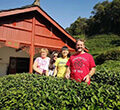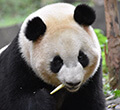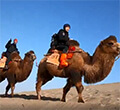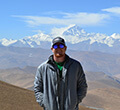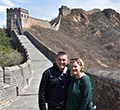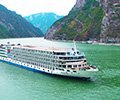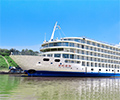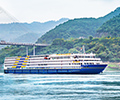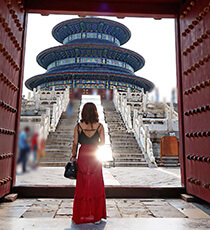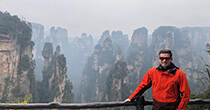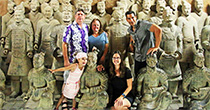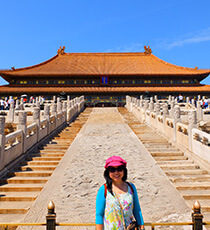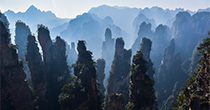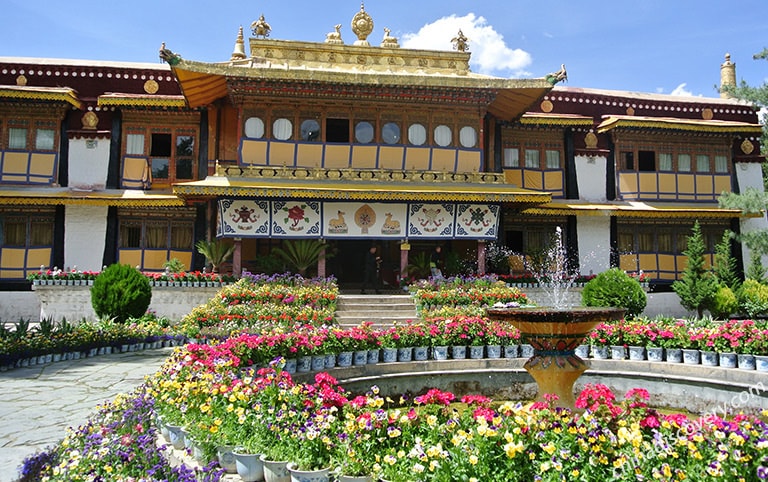Your tour - at a glance
Day 1~2 Arrival & Chengdu Tour
One full day to meet the cute Giant Panda, then enjoy leisure time in Wenshu Temple, Renmin Park and Jinli Old Street.
Day 3~5 Flight to Lhasa & Lhasa Tour
Two full days to explore the holy Lhasa, covering the grandiose Potala Palace, sacred Jokhang Temple, Barkhor Street, delicate Norbulingka Park, and two major temples in Tibet – Drepung Monastery and Sera Monastery.
Day 6~7 Gyantse, Shigatse and Everest Tour
Two full days in Shigatse to visit the famous holy Yamdrok Lake, grandiose Karola Glacier, and the famous Palcho Monastery and Tashilhunpo Monastery.
Day 8~9 Mt. Everest - Gyirong
Transfer to Mount Everest and appreciate the beautiful scenery in Everest Base Camp. Transfer to Kathmandu via Gyirong Port where you'll pass Friendship Bridge.
Day 10~12 Kathmandu - Nagarkot Chitwan - Pokhara
Travel to Kathmandu from Gyirong by overland driving on Day 10. Then, pay visits to Kathmandu Durbar Square and Swayambhunath and Boudhanath Stupa before leave Kathmandu. Extend to Kathmandu to Nagarkot, you will enjoy the great sunrise over. Then drive to Pokhara to visit Devi's Fall, Gupteswar Gupha, Bindbyabasini Temple and Barahi Temple.
Day 13~16 Pokhara - Chitwan - Kathmandu
On Day 13, drive to Chitwan and had a great time in Chitwan National Park on the following day. Then, travel back to Kathmandu via Patan. Leave Kathmandu on Day 16
Full Itinerary Day by Day
Day 1 Chengdu Arrival
Welcome to Chengdu, the hometown of the Giant Panda. Your local guide will meet you at the airport/train station and then escort you to your hotel in a private vehicle. The rest of today is yours to relax in the panda city on your own.
Arrival Ideas: Chengdu is only about 2~3 hours flying from the majority of big cities in China, such as Beijing, Xian, Shanghai, Guangzhou, etc. You can also get to Chengdu by high speed trains from Xian (4hrs), Chongqing (1hr), Guilin (6hrs), Kunming (6hrs), etc.
-
 Welcome to Chengdu (Night view of Jiuyanqiao)
Welcome to Chengdu (Night view of Jiuyanqiao)
Day 2 Chengdu (B, L)
This morning you will make a stirring visit to Chengdu Research Base of Giant Panda Breeding which is not only the most important panda scientific research center, but also dwelling home to more than 100 Giant Pandas. Walk at leisure through the bamboo framed paths, and closely observe giant pandas of different ages eating bamboos, playing with each other, tumbling, climbing trees, etc. Don't miss the chance to visit the most adorable panda cubs in the panda kindergartens. If you are lucky, you may be able to see the precious panda babies in the nursery rooms. There is also a very informative Panda Museum where you can learn more scientific facts about Giant Pandas.
Leaving the panda center, you will be taken to a hidden spiritual Buddhist temple in the bustling downtown of Chengdu - Wenshu Temple. Marvel at the exquisite Buddhist architecture, soak in the reverent atmosphere, and wander on the peaceful paths. Adjacent to the monastery is a small bazaar (Wenshufang) where you can enjoy a leisure stroll through to experience local market and living style.
Chengdu is famous for its relaxing and leisure pace throughout China, which will be proved after a stay in Renmin Park. Sit down, order a pot of Chinese tea, make a casual chat with your friends and watching locals indulging themselves in different kinds of folk entertainment - napping in a lively teahouse, playing mahjong, disco dancing, neck massage, ear cleaning... Next is an impressive trip to the famous Jinli Old Street. Time steals away from you quietly while walking on the lively streets which are full of delicious local snacks, delicate artifacts, interesting folk shows, etc.
At the end, your guide will escort you to your hotel.
Recommended Optional Evening Activities: 1) enjoy a delicious dinner of Sichuan cuisine (or hotpot) at a local restaurant; 2) watch a wonderful performance of Sichuan Opera which includes folk opera, face changing, fire spitting, rolling lights, and other delightful entertainment (usually performs during 20:00~21:30).
-
 Beautiful Jinli Old Street Shot by Our Customer Rick
Beautiful Jinli Old Street Shot by Our Customer Rick
-
 A Eating Panda, Shot by Our Guest
A Eating Panda, Shot by Our Guest
-
 Wenshu Temple Shot by Our Guest Marcin in 2017
Wenshu Temple Shot by Our Guest Marcin in 2017
Day 3 Flights to Lhasa from Chengdu (B)
Today you will take a flight to Lhasa Gongga Airport from Chengdu(about 2hrs). Welcome to Tibet - the holy land of Tibetan Buddhism! Your tour guide is ready to pick you up at the arrival hall, and escort you to your hotel in Lhasa downtown. Enjoy the stunning views along the Yarlong Tsangpo River.
After check in to your hotel, the rest of today is for you to acclimate to the high altitude and weather of Lhasa.
Orientation Tips: 1) avoid vigorous activities but can take some leisure walking in the city to acclimatize the air and high altitude of Lhasa city(3,600m); 2) do not drink liquor in the arrival day, water and fruits are recommended.
-
 Welcome to Lhasa City
Welcome to Lhasa City
Day 4 Lhasa ( B )
After breakfast, start an incredible day of exploration in Lhasa city. The grandiose Potala Palace will be the first site to discover. After more than 1300 years of historical changes, this colossal palace still dominates the skyline of Lhasa city. The Palace is the political and religious center of Tibet and has served as the governance and preaching site for the Dalai Lama. Climbing up the sacred steps to the Red Palace and White Palace you will explore their marvelous interiors full of exquisite Thangkas, numerous Buddha statues, vivid wall paintings, and other works of Buddhist art.
In the afternoon, first visit the holiest Buddhist temple in Tibet, Jokhang Temple, where the 12-year-old-like Shakyamuni statue is consecrated. With a history stretching over 1,300 years, this temple combines the architectural styles of Tibet, China, Nepal and India. As a spiritual center of Tibet, Jokhang Temple attracts hundreds of devoted pilgrims to worship there every day. Outside the door of Jokhang Temple is the famous pilgrimage circle, Barkhor Street, where you can join faithful Tibetans in colorful attires walking the circle around Jokhang Temple.
Tips for today: 1) wear suitable headgear and glasses to protect you from strong sunlight, but do not wear any hat while visiting inside the Tibetan monasteries; 2) photography is not allowed inside the chapels of monasteries; 3) have your passport with you all the time.
-
 Julie & Friend from France - Golden Roof of Jokhang Temple
Julie & Friend from France - Golden Roof of Jokhang Temple
-
 Our customers Julie and her friend from France visited Potala Palace, Lhasa, Tibet.
Our customers Julie and her friend from France visited Potala Palace, Lhasa, Tibet.
Day 5 Lhasa (B)
After breakfast, we start our day with a
visit to the summer palace of Dalai Lamas and also the largest Tibetan garden - Norbulingka Park. The luxuriant trees and flowers, cool ponds
and comfortable palaces make Norbulingka the best place for summer retreat.
Then drive about 5km westward to Drepung Monastery. The
monastery used to play a crucial role in Tibet Buddhism as the school of Dalai
Lamas. As you walk further, immense temples, chapels leap to your eyes one
after one. In its heyday, there were more than 10,000 monks living and studying
in the monastery. Various Buddhist rituals are held in the monastery during
festivals, most famous one is the ceremony of Buddha Display in annual Shoton
Festival.
We will then go to visit another
featured Sera Monastery. This six hundred year-old monastery
is famous for its grand ceremony of Buddhism debating apart from its beautiful
temples with sensational icons, murals and history.
-
 Norbulingka Park - A Beautiful Tibetan Style Garden
Norbulingka Park - A Beautiful Tibetan Style Garden
-
 Monks Debating at Sera Monastery
Monks Debating at Sera Monastery
-
 Drepung Monastery Entrance
Drepung Monastery Entrance
Day 6 Lhasa - Gyantse - Shigatse (B)
Today you will be taken to the second largest city in Tibet Shigatse, while viewing the highlights along the road. After about 1.5 hours of driving, you will arrive at the famous holy Yamdrok Lake. At an altitude of 4,441 meters, Yamdrok Lake is known as one of the "Three Holiest Lakes" in the world, and also one of the most beautiful lakes in Tibet. The turquoise pure waters of the lake are overlooked by incredible snow-capped mountains. Peaceful Tibetan villages surround the lake shore in the neighboring flat valleys. Looking in the distance, you can see clearly yaks and sheep grazing on the grassland. After this stop we will continue driving to the next destination - Gyantse and take a short break at Karola Glacier which is famous for its approachability, brightness and grotesque shape.
You will have lunch in Gyantse town and then make a visit to the key landmark of Gyantse Palcho Monastery. This is a traditional Tibetan monastery with a fusion of Han, Tibetan and Nepali architecture in its temples and stupa. Kumbum Stupa is the symbol of the monastery, famous for its 100,000 Buddhist figures, paintings, and statues in the chapels, wall niches and on the walls. After this visit, you will leave Gyantse and drive ahead to Shigatse for the night's accommodation.
Tips of today: 1) pack some food and drinks for today's long drive; 2) wear suitable clothes, headgear, and glasses to protect yourself from the strong sunlight, wind and possible cold.
-
 Yamdrok Lake Looks Like a Winding Blue Ribbon, Photographed by Our Guest Chona
Yamdrok Lake Looks Like a Winding Blue Ribbon, Photographed by Our Guest Chona
-
 Palkor Myriad Buddha Stupa
Palkor Myriad Buddha Stupa
Day 7 Shigatse - Mount Everest (B)
Get up early and have a hearty breakfast because today’s trip starts with a visit to one of the most important monasteries in Tibet - Tashilhunpo Monastery which was built in 1447 during the Ming Dynasty by a disciple of Buddhism, Master Tsongkhapa. The monastery became the Buddhism center of Tsang region and has been the traditional seat of successive Panchen Lamas, one of two most powerful leaders of Buddhists in Tibet. Tashilhunpo Monastery is surrounded by a 3000-meter-long wall and was constructed against the background of mountains facing to the sun. The Monastery has 58 sutra chapels and about 3600 rooms with many buildings made with golden glazed tiles and interlaced red and white walls. There is also a Thangka Exhibit Platform. Be prepared to meet many pilgrims visiting this holy place from far places and countries!
Later in the day, we will drive about 8 hours to the day’s final destination - Mount Everest. While it seems to be a tough driving day, the plateau landscape along the road is breathtaking and will keep you entranced. You will even have a chance to see four of the highest peaks in the world, all over 8,000 meters - Lhotse, Everest, Gyachung and Cho Oyu. After arrival at Rongbuk Monastery, you will find all the effort of the trip swept away by the sight of the majestic peak of Everest rising in front of you. You can then rest for a while before visiting this featured monastery of the Nyingma Buddhist sect.
Accommodation will be at Rongbuk Guest House. (If you visit Mount Everest during May to October, you will accommodate at the Tibetan Tents Camp just near Rongbuk Monastery). Please note that the accommodations at both places are very simple and basic. There are dorms with beds, duvets, heated blankets and hot water provided. You are suggested to bring your own sleeping bag if you have one. There is no running water, sinks or showers. The guest house only offers basic breakfast and dinner without menu. There is no private bathroom in the dorms. Only communal squat toilets are available. Remember to bring your own toilet paper.
Tips for today: 1) prepare some food and drinks to take with you because there are only some basic foods offered at Mount Everest; 2) pack warm clothes to keep yourself warm all the time and get fully prepared for the high altitude (5100m).
-
 Dining Room in Rongbuk Monastery Guesthouse
Dining Room in Rongbuk Monastery Guesthouse
-
 Tashilunpo Monastery
Tashilunpo Monastery
-
 Mount Everest
Mount Everest
Day 8 Everest Base Camp - Gyirong
Get up early to chase the most beautiful landscape of sunrise on the Everest. The morning sunlight shines on the highest peak, and appears a pleasant golden pyramid. If you are lucky, you will have chance to see the famous "flag clouds" which is a famous wonder on Mount Everest. You will see milk white streamer floating above the peak, and flutters toward one side like a banner in the wind. Sometimes, you can see it change the shape, like the huge waves on the sea or the impetuous horses on the ancient battlefield, and so forth. Once in a while, it is lucky to see the plateau eagles flying above the banner cloud, which is especially a particular
sightseeing.
Last, return to Rongbuk area and drive to Gyirong Town. Though it's a long driving about 360km, it's necessary and worthy your efforts. You have chance to see the clear face of Mount Shishapangma Peak and beautiful Pekutso Lake. After arrival, check in your hotel.
-
 Evereset Base Camp
Evereset Base Camp
Day 9 Gyirong - Kathmandu
Drive about 25km from your hotel to Gyirong Port. You are kindly required to walk on your own to cross the border bridge which is 50m long, check in Nepal side, you can get the Nepal visa upon arrival, please prepare one photo at passport size to get Nepal Visa. Your local Nepalese tour guide will pick you up and transfer you to Kathmandu city for accommodation.
-
 Boudhanath
Boudhanath
-
 Chinese-Nepal Friendship Bridge
Chinese-Nepal Friendship Bridge
Day 10 Kathmandu - Nagarkot (B)
Today after breakfast, your guide will pick you up at your hotel and escort you to visit the landmarks in Kathmandu.
Firstly, go to Kathmandu Durbar Square which is the complex of palaces, courtyards and temples that are built between the 12th and the 18th centuries by the ancient Malla Kings of Nepal. It is the social, religious and urban focal point of the city. Taleju Temple, Kal Bhairab (God of Destruction), Nautalle Durbar, Coronation Nasal Chowk, the Gaddi Baithak, the statue of King Pratap Malla, the Big Bell, Big Drum and the Jagnnath Temple are some of the interesting things to see in this Square.
After seeing the featured architectures in Kathmandu Durbar Square, turn to Swayambhunath (Monkey Temple), the most ancient and enigmatic of all the Valley's holy shrines. It lies 2 km west of Kathmandu city, across the Vishnumati river. The golden spire of Swayambhunath stupa crowns a wooded hillock and offers a commanding view of Kathmandu city. On clear days, one can even view a line of Himalayan peaks. The view is splendid at dusk as city lights flicker one by one, and even better when a full moon hangs in the sky.
Then, you will visit Boudhanath, the biggest stupa in Kathmandu Valley. The all-seeing red, white and blue eyes of Buddha are painted on all four sides of the stupa, similar to Swayambhunath, and surrounded by hundreds of fluttering prayer flags, prayer wheels and small images of Buddha.
After enjoying the highlights of Kathmandu Valley, you will drive about 34km to Nagarkot. Stay overnight in Nagarkot.
-
 Bhaktapur Durbar Square
Bhaktapur Durbar Square
-
 Swayambhunath
Swayambhunath
Day 11 Nagarkot – Pokhara (B)
In the early morning, you will get up to watch the spectacular sunrise over Mt. Everest from Nagarkot. There are magnificent sites of other mountain peaks. Then turn back to your Hotel for breakfast.
Before turning to Pokhara, you will have a short stay in Bhaktapur and explore the well-preserved buildings in Bhaktapur Durbar Square. In the afternoon, you will be transferred to Pokhara. Pokhara is a remarkable place of natural beauty. Situated at an altitude of 827m from the sea level and 200 km west of Kathmandu valley, the city is known as a center of adventure. The enchanting city with a population of around 95,000 has several beautiful lakes and offers stunning panoramic views of Himalayan peaks. The serenity of lakes and the magnificence of the Himalayas rising behind them create an ambience of peace and magic. So today the city has not only become the starting point for most popular trekking and rafting destinations but also a place to relax and enjoy the beauty of nature. Accommodate in Pokhara.
-
 Watch Sunrise over Mount Everest in Nagarkot
Watch Sunrise over Mount Everest in Nagarkot
Day 12 Pokhara (B)
Today you will get the chance to have full-day sightseeing of Pokhara. Experience the highlights in Pokhara including Devi's Fall, Gupteswar Gupha, Bindbyabasini Temple and Barahi Temple. Stay overnight in Pokhara.
Devi's Fall: Locally known as Patale Chhango (Hell's Fall), Devi's fall (also known as Devin's or David's) is an awesome waterfall lying about 2 km south-west of Pokhara airport on the highway to Tansen.
Gupteswar Gupha: a sacred cave, lies 2 km from Pokhara airport on the Siddhartha Highway leading southwest from the city. The entrance is right across from Devi's Fall and the cave is almost 3 km long. It has some big hall-size rooms and some passages where you have to crawl on all fours.
Bindbyabasini Temple: It is the center of religious activity in the old bazaar. It is dedicated to goddess Bhagwati, yet another manifestation of Shakti.
Barahi Temple: This is the most important religious monument in Pokhara. Built almost in the middle of Phewa Lake, the two storied pagoda is dedicated to the boar manifestation of Ajima, the deity representing the female force Shakti.
-
 Phewa Lake in Pokhara
Phewa Lake in Pokhara
-
 Bindbyabasini Temple
Bindbyabasini Temple
Day 13 Pokhara - Chitwan (B)
Today after breakfast, your guide will pick you up at your hotel and escort you to transfer to Chitwan where you could have evening view sunset from Narayani River. Stay overnight in Chitwan.
Chitwan National Park: It is the most popular destination for tourists wanting to have a good experience of the region's wildlife. It was declared a National Park in 1973. In 1984, UNESCO designated Royal Chitwan National Park a Natural World Heritage Site. The Park offers protection to 56 species of mammals including the one-horned rhinoceros, Bengal tiger, leopard, sloth bear, wild elephant, striped hyena, Gangetic dolphin and wild bison. There are estimated to be 470 species of mammals, over 500 species of birds, 126 species of fish, 150 species of butterflies and 47 species of reptiles in the park! A recent study also points out that over a third of Nepal's tigers are in Chitwan.
-
 Breathtaking Views of Phewa Lake
Breathtaking Views of Phewa Lake
Day 14 Chitwan National Park ( B, L, D )
Today after breakfast, you’ll take the challenge of Jungle
activities, elephant safari and canoeing. Chitwan gives you the full wild experiences
with the wildlife and Nature in the Background.
-
 Elephant safari
Elephant safari
Day 15 Chitwan - Kathmandu (B)
After breakfast in the morning, drive back to Kathmandu. Have lunch
in Kathmandu, and then you will visit historical Patan, the Kathmandu and Bhaktapur’s
siter city. You will get a great culture experience in Patan Durbar Square. The ornate buildings will give a pleasant
feeling.
-
 Patan Dubar Square
Patan Dubar Square
Day 16 Kathmandu Departure (B)
Today, you could have the early morning mountain flight (Optional). After the mountain sightseeing, your journey in Nepal comes to an end today! And your guide will pick you up to the airport in time for the scheduled flight to your next destination.
Make an Inquiry for Free
Recommended Add-on Options
Visa Notice for Traveling to China
2025/2026 China Tour Visa-friendly Policies:
1. China has launched a 30 Days Visa-free Policy for 38 eligible countries, including several European nations — Andorra, Austria, Belgium, Bulgaria, Croatia, Cyprus, Denmark, Estonia, Finland, France, Germany, Greece, Hungary, Iceland, Ireland, Italy, Latvia, Liechtenstein, Luxembourg, Malta, Monaco, Montenegro, the Netherlands, North Macedonia, Poland, Portugal, Romania, Slovakia, Slovenia, Spain, and Switzerland. In Oceania, Australia and New Zealand are listed, while in Asia, Malaysia, South Korea, Brunei, and Japan are included. This policy is valid till December 31, 2025. Read more »
2. 10 days visa free (transit) for 54 eligible countries include the US, UK, Canada, Brazil, etc. Eligible travelers can now travel across provinces, for example traveling from Beijing to Xian, then to Shanghai. Mohan Railway Port at China-Laos border can be used to enter/leave Yunnan. Hong Kong High-speed Rail West Kowloon Station has been added to Guangdong Province 144-hour transit visa-free. Read more »
3. As of now, China has established full visa exemption agreements with 25 countries, including Asian countries: Thailand, Singapore, Maldives, Kazakhstan, the UAE, Qatar, Armenia, Georgia; European countries: Albania, Belarus, Bosnia and Herzegovina, Serbia, San Marino; African countries: Mauritius, Seychelles; Oceania countries: Fiji, Tonga, Solomon Islands; North American countries: Antigua and Barbuda, Barbados, Dominica, Ecuador, Grenada, Bahamas; South American country: Suriname.
4. Booking of flights and hotels, China itineraries and invitation letters are not required for application of Chinese Tourist Visa for U.S.nationals.
5. Appointment is not required for visa application in many embassies and consulates.
Practical Info about Traveling with Us
Restaurant & Food
Vegetarian food Requirement
Vegetarian food in Chinese cuisine culture is usually divided into 3 categories: the Monastery
Vegetarian
Food, the Court Vegetarian Food and the Folk Vegetarian Food. And the main ingredients are:
soybean,
taro powder, mushrooms, fresh vegetables and tofu (bean curd). It will be easier to find the
vegetarian
restaurants in big cities of china, such as: Beijing, Shanghai, Xian, HK, etc.
If allergic to some food
We suggest you to list any food or ingredients that you are allergic to and let our travel
consultant
know. Then your travel consultant will mark them in the guide’s itinerary, so that our guides
in
different cities can make some preparations and arrangements in advance.
Do our guide and driver join the meal with us?
The tour guides and driver will be at the same restaurants with you, but they will only join the
meal
when you invite. Sometimes the drivers are shy to join as they usually eat fast and could not
understand
English talk around the table, so the guide will be with you more often.
Will we be able to try some local foods during our visit?
Yes, you will. There will be some meals excluded in your itinerary as you like, and your private
guide
will be delighted to give you some suggestions and take you to the local restaurants, if you
are
interested in local food tasting. But remember, some local snacks may not match your stomach,
so
ask your guided for more information before eating.
Shopping
What to buy in China?
In China, there are myriads of souvenirs for visitors, and each city has its own specialty.
How to bargain?
Bargains are not acceptable in big supermarkets and department stores. But in some night markets
or tourist
shops, you can bargain for a lower price, since the vendors always ask for very high price for
a
certain item. You’d better ask the opinion of the guide first, and then the guide will tell you
the
real value and quality of the item. Please note that when the bargain is processing, the guide
will
be hesitate to help as it may annoy the bosses. Just try to let the guides know you will
bargain
in advance.
What to do with persistent vendors?
If you do not need something from them, just do not ask for price. Some of the venders are very
persisted,
and if they keep selling things to you, you can simply say “No, thanks.” (Chinese
pronunciation:
”Bu, XieXie”). If they do not give up, you just keep silence. Silence is sometimes useful to
handle
this situation.
Private tour features
- 1. Private guide, driver and vehicle are for your exclusive use; no matter you are
individually,
or in a family or friends group. The tour is run exclusively for you without strangers.
- 2. Every itinerary can be customized to meet your specific interests/ wishes, that is, you
can choose
your favored hotels, sightseeing spots, the tour length, means of transportation, budget,
etc.
All are free of charge.
- 3. Start the tour on any date you want.
- 4. Escort you through the whole tour. All private transfers during the tour are offered,
including
airport/train station transfer, hotel-attractions round trip transfer.
- 5. The sightseeing during the tour could be based on your own timetable and pace. Flexible
to change
at your short notice.
- 6. Ideal for people who need considerate care and assistance, such as elderly, the
disabled, families
with small children.
Emergency calls
Call your guide, or if you can’t find your guide, call your travel consultant or our office
immediately.
All the phone numbers include in our confirmation letter. Keep the letter with your during your
trip.
